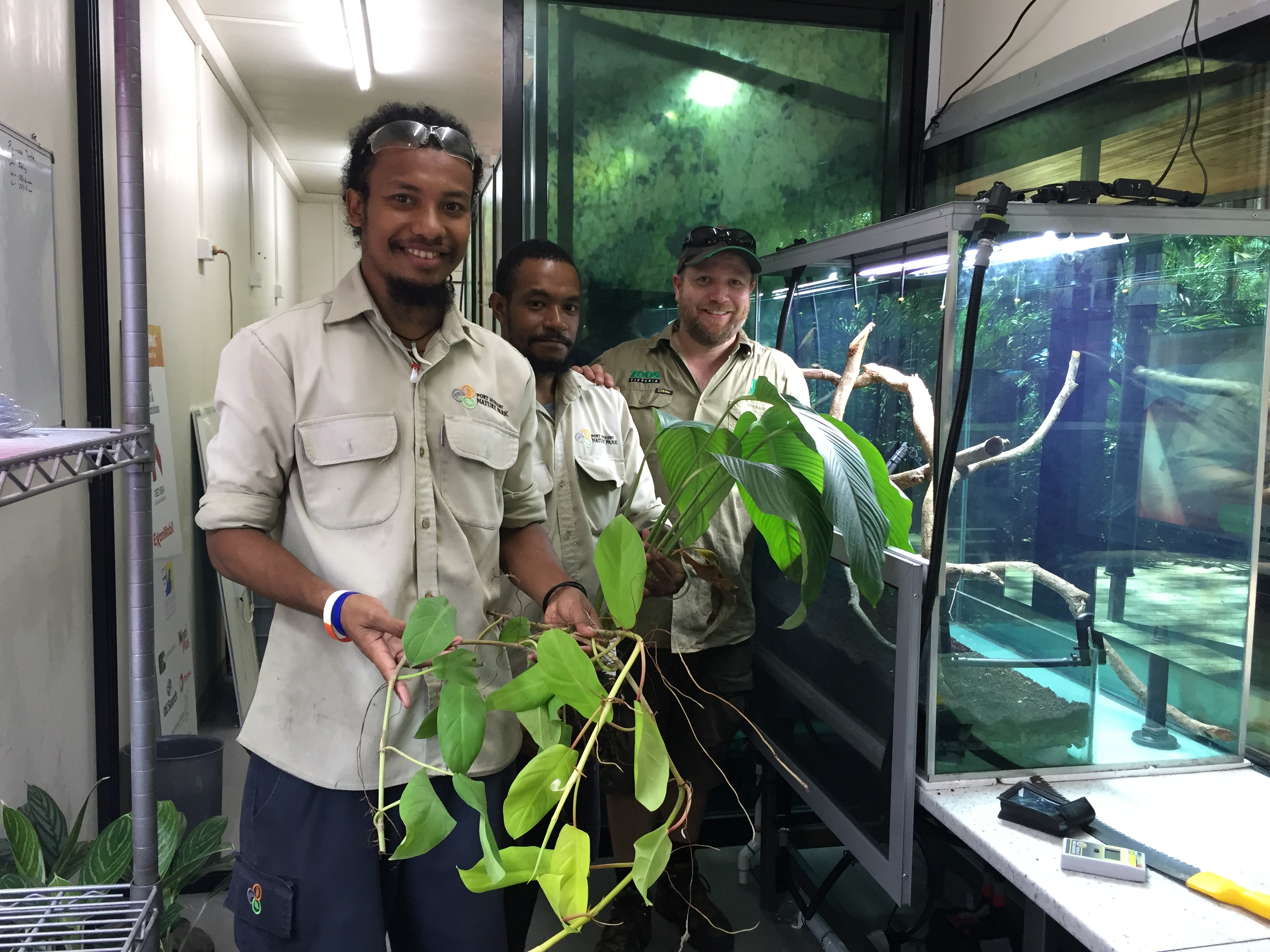The first phase of on-ground work to strengthen a secure future for Papua New Guinea frogs was recently completed at the Port Moresby Nature Park. Part of a larger, long-term strategy to mitigate the likely impacts of the Amphibian Chytrid Fungus on PNG frogs, the project has seen the country’s first public display for PNG frogs installed at the Nature Park. Melbourne Zoo’s frog husbandry specialist, Damian Goodall, spent a week sharing his expertise with the Park’s frog and reptile keepers, Ryan Reuma and Dagie Solomon. A 1 x 0.6 x 0.6m glass aquarium was fitted-out with filtration and irrigation systems, lighting to support live plants and meet the frogs’ UV requirements, and natural landscaping to highlight the frogs to Park visitors. A major focus was ease of maintenance and recording climatic parameters like temperature and humidity. The exhibit’s first inhabitants, White-lipped Tree Frogs (Litoria infrafenata) and Green Tree Frogs (Litoria caerulea) have settled in well.
It is planned to add further displays for Cane Toad (Rhinella marina) and Water Frog (Rana daemeli). All four species occur on the Park grounds.
Establishing the display was underpinned by two workshops on frog husbandry for the Park’s Life Science staff and complemented by installation of off-exhibit tanks for tadpoles and metamorphs. Critical for successful frog husbandry, the Park has an expanding live food unit that receives regular input from staff at Melbourne Zoo’s Invertebrate Department.
All available evidence points to New Guinea being the only large landmass yet to be affected by chytrid (see Bower et al., 2019; “Island of opportunity: can New Guinea protect amphibians from a globally emerging pathogen?”). Accordingly, we are being proactive and developing capacity for frog husbandry and breeding, in PNG for PNG frogs, in advance of the likely arrival of chytrid in PNG.
Much of the country’s frog fauna comprises small species with poorly known captive needs, ie. the large number of microhylids. As such, and recognising that the Park’s keepers are just starting out on the journey of caring for frogs, husbandry skills will develop with common hardy species before moving on to the more challenging less well-known species.
The work is part of a long-term sister zoo partnership between the Nature Park and Zoos Victoria, which has facilitated visits by more than 30 staff sharing expertise across the gamut of zoo operations.
Damian Goodall, Melbourne Zoo ([email protected] ); and Chris Banks, Zoos Victoria ([email protected] ).

